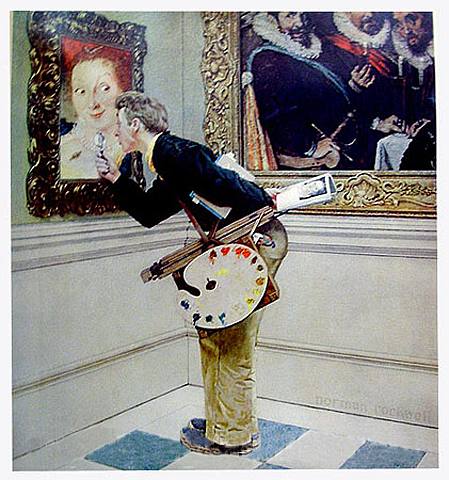
Dressing the Walls: Picture Hanging Tips
Dressing the Walls: Picture Hanging Tips
Hanging art work is a great way to add decorative flair to a room. The color, shape and type of artwork you choose will add a personal touch to every space. How you hang wall art—as a single frame or as a grouping of frames—influences the entire look of the room. Proper picture hanging requires more consideration than one might think; it is not just about pounding a nail in the wall and resting your art on it.
The following are some key tips on how to hang a picture:

Decide on the number of frames
When hanging wall art, first decide on the number of frames you want to use. You can either hang a single frame or a group of frames on the same wall.
If you opt for a single frame, it should suit the size of the wall, and be placed at the center point. Make sure you hang the picture at eye level; you may want to ask someone to help you judge the position.
If you want to hang a grouping of artwork—that is, two or more frames of the same or varying size—test the arrangement first by laying the pictures on the floor. Do you want to hang the frames in a symmetrical line? Do you want to hang them in a diagonal line? Play around with creative patterns until you find one that pleases you. To replicate the exact pattern, lay the pictures on paper and trace the outside of each frame. Tape the paper to the wall and use it as a template.
Match art and wall size
Although picture hanging allows for personal creativity, it needs to be esthetically pleasing to the eye once the last frame has been secured to the wall. The number one rule to remember when you hang a picture is that the size of the frame needs to be relative to the size of the wall. Smaller frames look best on narrow walls, while larger frames or a group of frames are best hung on expansive walls.
Match art to furniture size
Wall art needs to appropriate furniture size. For instance, the picture frame over your couch should not be longer than the width of the couch. As a general rule, the bottom length of the frame should not exceed 75% to 80% of the length of the piece of furniture, and let the height of the furniture piece determine the height of the art. It should not be too high; the base of the frame should be no more than 8” inches above the top of the piece of furniture.
Choose the right colors

In order for your wall art to stand out and make a statement, choose a picture that best complements the room’s colors, and that brings out the mood you want to achieve.
Vibrant, bold colors in artwork add pizzazz, while neutral tones produce a calming effect. Match the colors in the picture to the colors of your wall or couch, or to one of the subtle shades in the carpet. However, if you want to create an art-deco-inspired look, hang a picture whose main color contrasts that of the walls. For example, if you have green walls, choose a picture that has bright red tones in it—it will add punch to the entire room and make that wall the focal point.
Use an art shelf
Who says art needs to be hung on a wall? Instead, try putting up a shelf on which you can rest art pieces. A shelf can take up less wall space and add a fashionable, contemporary look to a room.
Be creative
You do not have to hang a group of frames in a straight line. Depending on the wall, you can create original, interesting displays with wall art.
Art pieces can be hung in a horizontal line. This pattern creates a widening effect on the wall, and looks best displayed over a long piece of furniture such as a couch or table.
Hanging wall art in a vertical line gives a more formal look and adds height and refinement to a room. This picture-hanging pattern looks best when displayed near a doorway.
A diagonal line of picture frames produces a unique and interesting design. This pattern should be reserved for a stairway where there is a natural progression of height occurring along the wall. Hanging pictures diagonally on any other wall will give an awkward look to the room.
Hang art securely
When you hang a picture, make sure the frame is resting flat against the wall. Instead of nails, use specially-designed picture hooks, and make sure that each accommodates the picture’s weight. If your frame is very large or heavy, the hooks should be installed in the wall studs to get the sturdiest support.
Picture-hanging perfection
While a blank wall can be intimidating to tackle, these picture-hanging tips should make the task a little easier. Choose a piece or a few pieces of artwork you like, color-coordinate them with a specific room, decide on a picture-hanging pattern, secure them well, and voila! You’ve just created a well-dressed wall.
Donovan Gauvreau
Art Historian, Donovan Gauvreau lectures about art therapy with a focus on creativity development. He believes we can learn from the great masters in art to communicate ideas and feelings through painting. He provides content for www.AaronArtPrints.org to educate and inspire people to take a glimpse into an artist's life to better understand the meaning behind their work.












